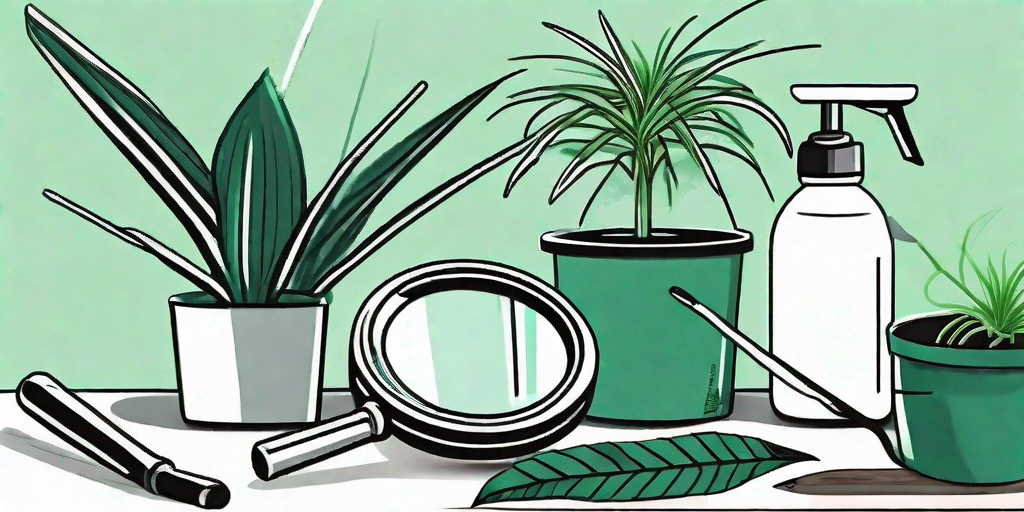
Ah, the Spider Plant. The green and white striped, long-leaved beauty that graces many a home with its presence. But what's this? Blackening leaves? Oh, the horror! Fear not, dear plant parent, for we have the solutions to your leafy woes. Let's dive into the world of chlorophytum comosum (that's fancy plant speak for Spider Plant) and save your green friend from the dreaded black leaf syndrome.
Understanding Your Spider Plant
Before we can tackle the problem, we need to understand the patient. Spider Plants are native to tropical and southern Africa, so they're used to a bit of heat and humidity. They're also quite the social butterflies, preferring bright, indirect light to dark corners. So, if you've stuck yours in a gloomy spot, it might be throwing a bit of a tantrum.
Spider Plants are also known for their air-purifying qualities. They're like the vacuum cleaners of the plant world, sucking up all those nasty toxins and giving you fresh, clean air in return. But remember, even the best vacuum cleaner needs a bit of TLC now and then.
Watering Woes
One of the most common causes of blackening leaves in Spider Plants is overwatering. These plants are not big drinkers. In fact, they prefer their soil to dry out a bit between waterings. So, if you're treating your Spider Plant like a fish, it's time to put the watering can down.
Underwatering can also cause problems. While they don't like to be soggy, Spider Plants do need a drink now and then. If the leaves are blackening and the plant looks a bit limp, it might be time to up the watering schedule.
How to Save Your Spider Plant
Now that we understand the potential problems, let's get down to the nitty-gritty of saving your Spider Plant. We'll tackle this in stages, like a plant-saving SWAT team.
Step 1: Check the Watering
First things first, check your watering schedule. If the soil is soggy, let it dry out before watering again. If it's bone dry, give your plant a good drink. Remember, balance is key here.
When you do water, make sure to do so thoroughly. Water should come out of the drainage holes at the bottom of the pot. This ensures that the water reaches the entire root system. But don't let your plant sit in water. If there's water left in the saucer after about 15 minutes, pour it out.
Step 2: Look at the Light
Next, consider the light your plant is getting. If it's in a dark corner, move it to a spot with bright, indirect light. But be careful not to put it in direct sunlight, as this can scorch the leaves.
If moving the plant isn't an option, consider getting a grow light. These can provide the light your plant needs, without the risk of sunburn. Yes, plants can get sunburn too. Who knew?
Step 3: Consider the Temperature and Humidity
Spider Plants like temperatures between 70 and 90 degrees Fahrenheit. If your home is colder than this, you might need to move your plant to a warmer spot or consider getting a heat mat.
Humidity is also important. If the air in your home is dry, consider getting a humidifier or placing your plant on a tray of pebbles with water. Just make sure the bottom of the pot isn't sitting in the water.
FAQs
Why are the tips of my Spider Plant's leaves turning brown?
This is often a sign of low humidity or too much fertilizer. Try increasing the humidity and cutting back on the fertilizer.
Can I cut off the black leaves?
Yes, you can. In fact, it's a good idea to remove any dead or dying leaves to prevent the spread of disease.
How often should I fertilize my Spider Plant?
During the growing season (spring and summer), you should fertilize your Spider Plant about once a month. During the winter, you can cut back to once every two months.
Conclusion
So there you have it, plant parents. With a bit of TLC and some detective work, you can save your Spider Plant from blackening leaves. Remember, balance is key. Too much or too little of anything can cause problems. Now go forth and save those plants!















